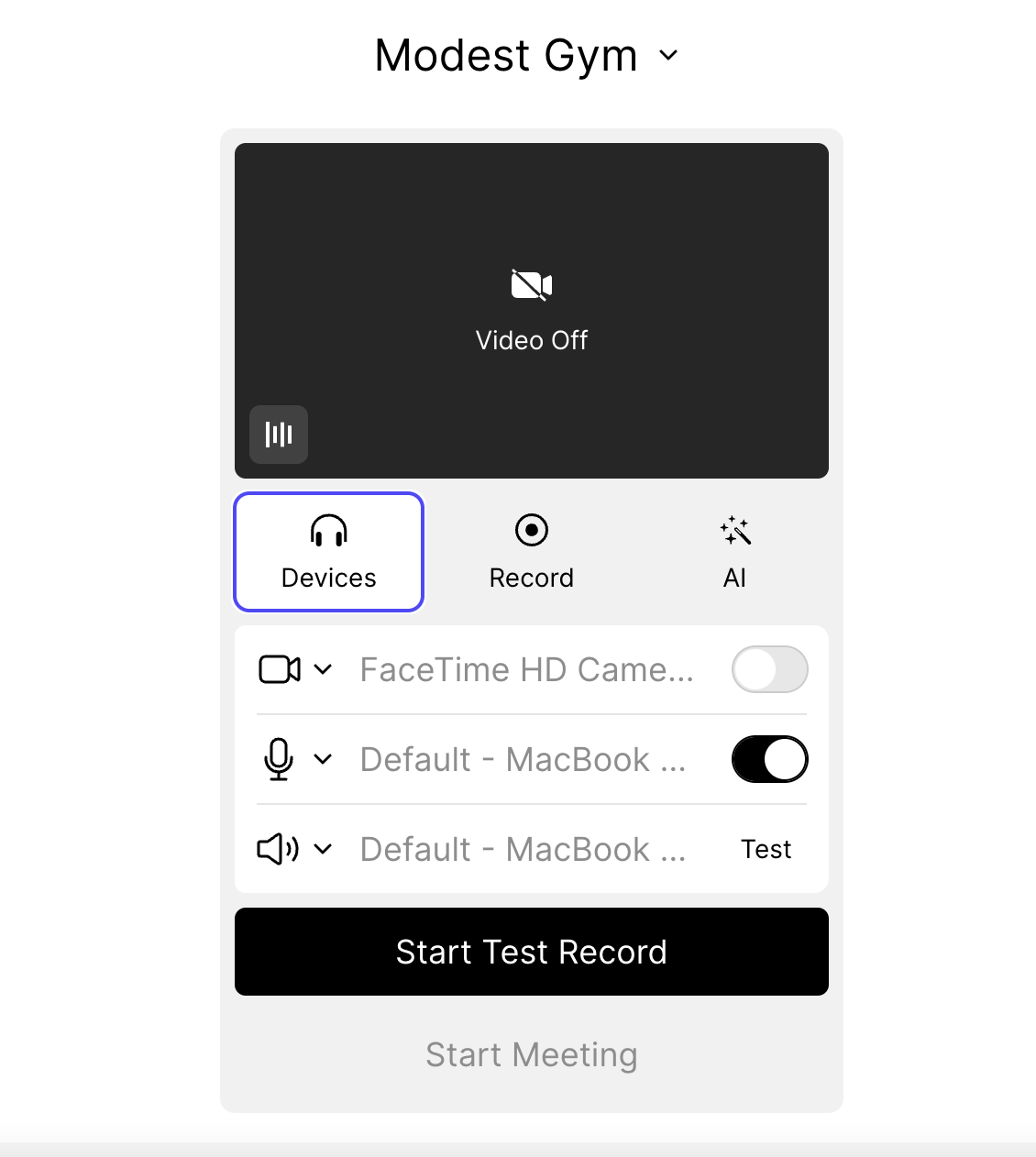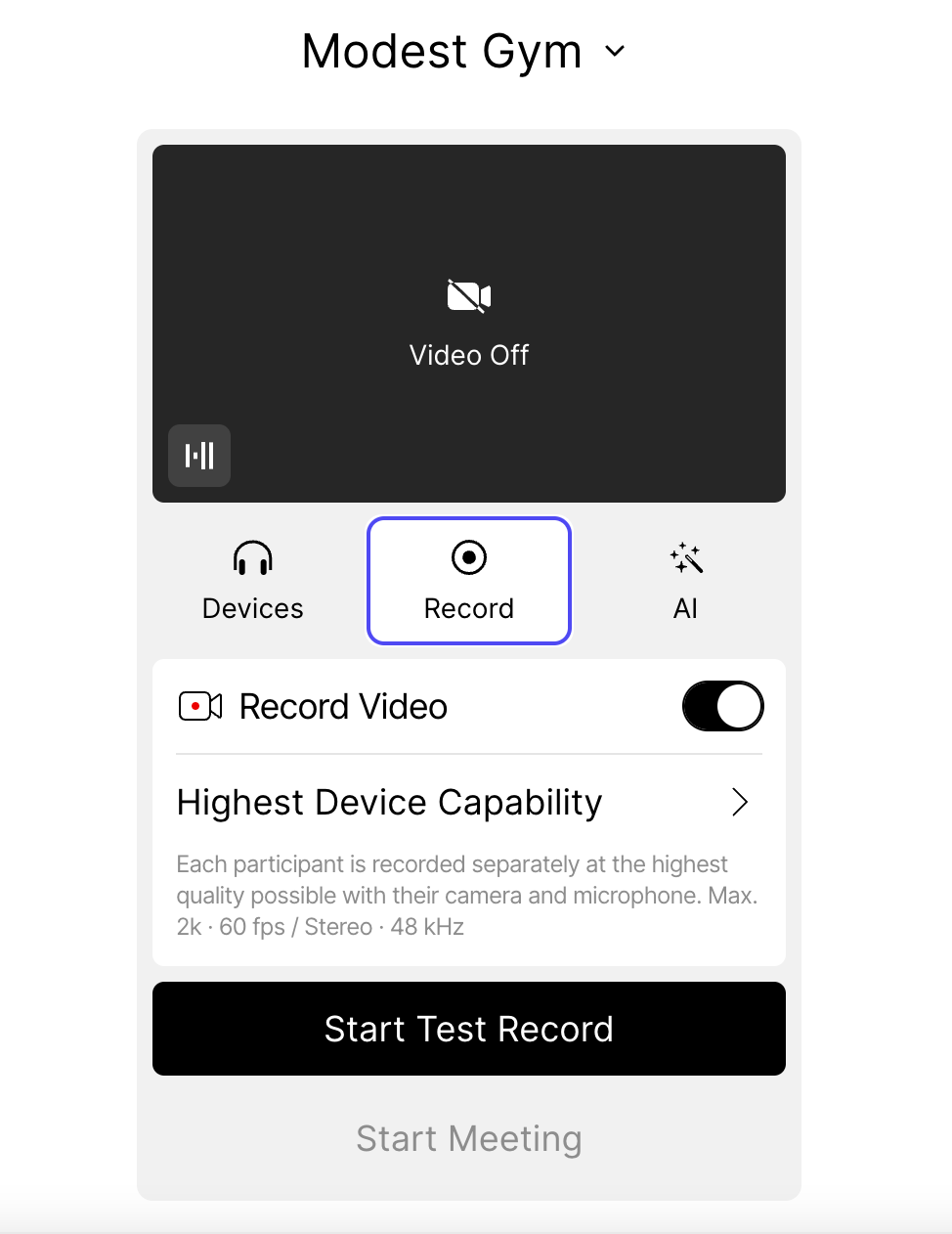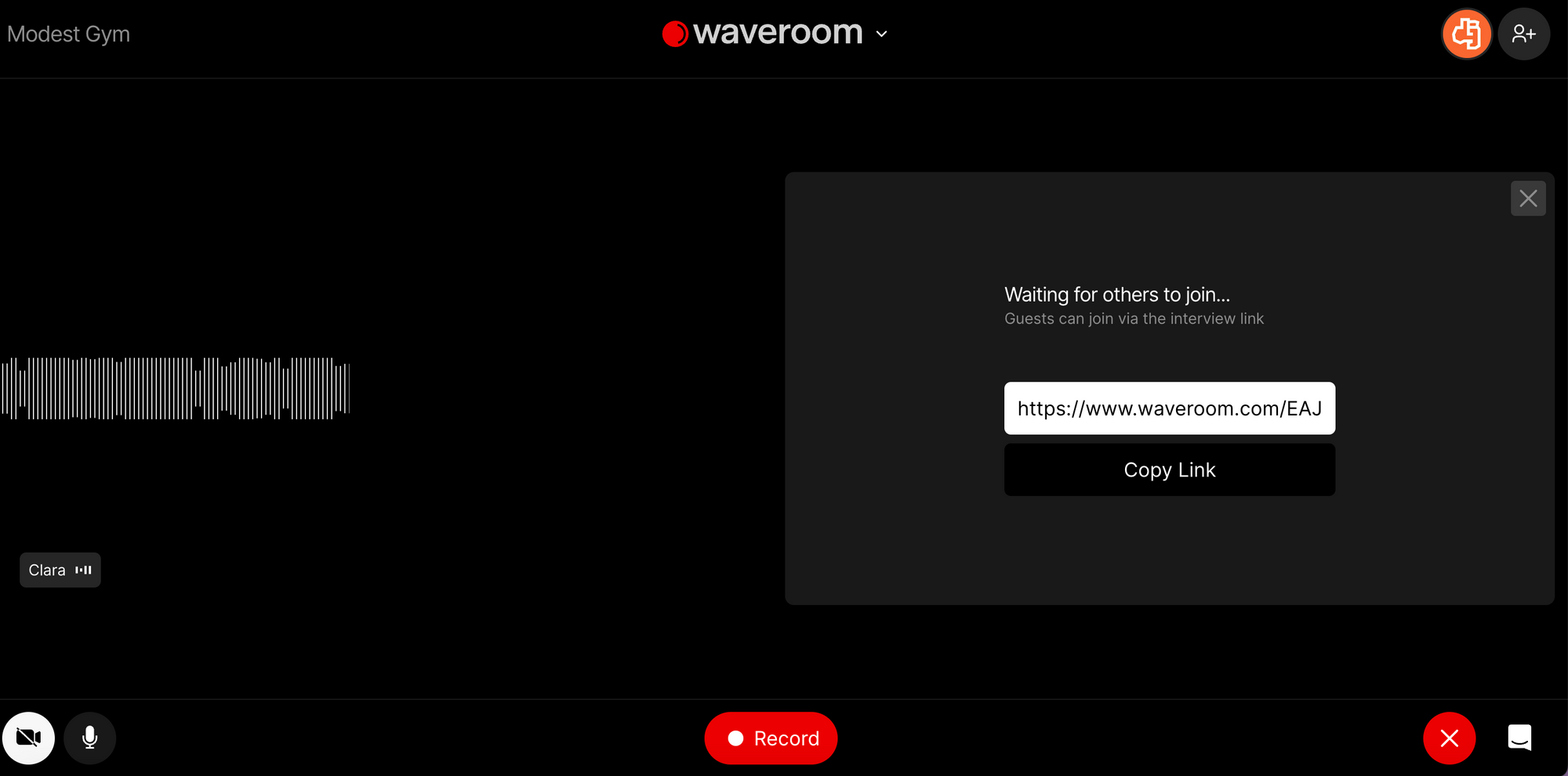How to Make an Audiobook: 10 Steps to Record an Audio Story
Learn what you need to make an audiobook, how to do it, and find the ways to distribute and monetise your efforts.

Audiobooks offer an alternative way for people to experience stories, information, or educational content without the need to read the text itself, which is a perfect way to learn stuff in the background mode. If you've ever wanted to be an audiobook storyteller, look no further. In this piece, we'll show you what you need to record an audiobook, how to do it, and uncover the ways to distribute and monetize your efforts.
What is an audiobook?
An audiobook is a spoken version of a book that you can listen to, not read. To listen to an audiobook, you need to use one of a multitude of specialised services that stream them, including Spotify, that recently abandonded almost all their plans to expand non-music offerings and created an audiobook-only subscription. You can also find audiobooks on YouTube and even SoundCloud, but the major platforms to listen to audiobooks are Audible, Libro.fm, Audiobooks.com, Everand, and Libby.
Audiobooks are generally accessible through various platforms—all because they're available in MP3 or streaming.
Typically, they're narrated by professional voice actors, but sometimes author themselves might voice a book.
Should you make an audiobook in 2024?
There's no reason not to. Even though AI voice cloning is on the rise, it doesn't mean you should give up on your dream to release your own audiobook and even narrate it. The North American region holds a significant share of over 45% in the market. Major companies in the audiobook market are Amazon, Apple, Audible, Barnes & Noble Booksellers, Downpour.com, and Google.
The audiobook market is witnessing a shift towards subscription-based models, with the subscription segment expected to grow at a rate of 27.6%, and consumers are increasingly drawn to the convenience and accessibility of audiobooks on various devices.
Speaking of the genre preferences, fiction remains the dominant genre in the audiobooks market, accounting for over 60% of the market share in 2022. Other genres like humor, nonfiction, and romance are also experiencing solid sales gains.
Companies contribute to the growth too and are focusing on empowering authors by offering high royalties and full control over their content.
But these are the benefits for authors. What about listeners?
Audiobooks make literature accessible to people with visual impairments or other disabilities that may make reading difficult. They also a convenient way for busy individuals to enjoy books while multitasking or engaging in activities where reading is not possible, like driving, exercising, or doing household chores. The audiobook listening market is expanding, too, with more than half of US adults having listened to an audiobook at some point. The demographic of audiobook listeners is skewing younger and more diverse.
Some people prefer listening to books rather than reading them, so if you're a writer, creating an audiobook can help you reach a wider audience and potentially attract new readers and/or listeners. A skilled narrator can bring a new life to your book through expressive reading, accents, and character voices, enhancing the storytelling experience for listeners.
Audiobooks can be sold or licensed separately from print or digital versions of your book, providing an additional revenue stream for authors and publishers. Besides, they can be the basis for other adaptations, such as podcasts, radio plays, or multimedia projects, expanding the potential reach for your work.
Can I make my own audiobook?
Absolutely! Everyone can. According to Statista, the average amount of audiobooks published each year has generally increased for the past 10 years, up to 74,000 titles in 2021, so it means that many authors and narrators seize the opportunity.
When it comes to recording your audiobook and finding a platform to host it, there are plenty of excellent options available (more on that below). As interest in audiobook production grows, many recording platforms now provide tools specifically designed for creating and editing audiobooks. Once your audiobook is complete, you can easily self-publish it through a distributor.
What do you need to make an audiobook?
Apart from your voice, you'll also need:
A compelling story
Whether it's your own creation or a book you've chosen to narrate, having a captivating story is crucial. Your enthusiasm for sharing it with others will shine through.
Script
Ensure you have a written version of the book's text to follow while recording. This could be a finalised manuscript or a script specifically tailored for narration, including any pronunciation notes or character voices.
Creative direction
Before you hit the Record button, decide on the tone, pacing, and style of narration that best suits your book. Provide clear guidance to the narrator if you're working with one, or adapt your own narration style accordingly.
Recording equipment
Super expensive options aren't a necessity but still, you should invest in a high-quality microphone, headphones, and a recording studio.
Recording and editing software
As a beginner, look for user-friendly recording platforms that don't compromise on quality. For post-production, opt for simple yet professional editing software. Platforms like Waveroom offer both recording and basic editing features in one place, simplifying the production process.
A reliable platform
Choose a recording platform that doesn't rely heavily on internet connectivity for high-quality recording. Waveroom uses local recording, ensuring files are captured directly on your device, minimizing the impact of internet issues.
A budget
Narrating an audiobook isn't entirely free. Consider the costs involved, including equipment, narrator fees, and promotional expenses and set a budget before starting your audiobook project to ensure you're prepared for any financial investments required.
Time and dedication
Creating an audiobook can be time-consuming, especially if you're narrating it yourself. Dedicate sufficient time to recording, editing, and post-production to ensure a high-quality result.
Cover art and metadata
Design cover art for your audiobook and prepare metadata such as title, author name, description, and keywords for distribution platforms.
Distribution strategy
Plan how you'll distribute and promote your audiobook once it's completed. This may involve choosing distribution platforms, setting pricing, and implementing marketing strategies to reach your target audience.
Legal considerations
Last but not least are the legal questions. Ensure you have the necessary rights and permissions to create an audiobook, especially if you're adapting someone else's work. This may involve obtaining copyright permissions or negotiating royalty agreements with rights holders.
10 Steps on how to make an audiobook
The introduction was long enough (although useful, we hope), so let's get straight to the tutorial. Here are the essential steps you should take to start recording an audiobook.
#1. Preparation
The heart of an audiobook lies in its story. There are various avenues to choose from when selecting the story for your audiobook. One option is to adapt a popular book into an audiobook format. This can be an attractive choice if there's a book you're deeply passionate about. However, it's crucial to obtain permission from the author beforehand, as the copyright of the work rests with them. Typically, this involves negotiating either an upfront fee or a royalty arrangement for each audiobook sold.
Alternatively, you may have authored a story yourself that you envision in audio format. Since you own the copyright to your own work, you have the freedom to proceed with turning your story into an audiobook without any legal hurdles. This gives you the autonomy to begin planning and executing the creation process for your audiobook.
✅ Here's the checklist:
- Choose the book you want to turn into an audiobook. Ensure it's properly edited and formatted for audio.
- Decide whether you'll narrate the book yourself or hire a professional narrator.
- Determine the tone, pacing, and style of narration that best suits the book.
- Create a script or manuscript specifically tailored for narration, including any pronunciation notes or character voices.
- Set a timeline and budget for the project.
#2. Select a narrator for the audiobook
The narrator's voice will breathe life into your book. Depending on your resources and expertise, you may opt to narrate the audiobook yourself. While this can be cost-effective, it's essential to understand the skills required of a proficient narrator before undertaking the task.
These skills include:
- The narrator should be capable of reading aloud in a captivating and compelling manner to keep listeners engaged.
- A skilled narrator can adeptly switch between different tones and accents as needed to convey various moods and characters within the story.
- The ability to create distinct and memorable character voices adds depth and authenticity to the audiobook narration.
- Knowing when to pause and how to control the pace of delivery enhances the overall listening experience.
If you want to be the narrator yourself, keep these tips in mind:
- Read out loud before recording: Although you know the text well, reading aloud helps identify areas for improvement and practice delivery with appropriate emotions. Read through the chapter you plan to record, making notes on punctuation and practicing challenging words or phrases.
- Record a demo: Start by recording a demo to ensure everything works well technically. Share the demo with someone experienced in audiobook recording for feedback on volume, pacing, and emotions. Use their input to make adjustments before the actual recording.
- Avoid certain foods and stay hydrated: Foods high in fat or spice can linger in your throat, affecting enunciation, while large meals may cause burps or heartburn. Before recording, avoid these foods to maintain clear speech. Additionally, stay hydrated during recording sessions to prevent a parched throat.
- Limit recording sessions to 2-3 hours: To protect your voice, avoid overworking it by limiting recording sessions to 2-3 hours at a time. Extended sessions can lead to vocal fatigue and increased mistakes. Take breaks or stop recording to allow your voice to rest and recover.
- Use a dedicated sound marker for mistakes: When recording, if you make a mistake, pause and make a specific, loud sound before restarting the sentence. This creates a clear marker in the audio for easier identification during editing, reducing the time spent on post-production work.
#3. Prepare recording setup
Find a quiet space with minimal background noise where you can record. Consider using a closet or small room with soft furnishings to reduce echo. You'll also want to set up your recording equipment, including a high-quality microphone, pop filter, and noise-canceling headphones.
If you lack a quiet room for recording, renting a studio is a viable alternative. Many studios offer hourly rental services, providing professionally soundproofed and equipped spaces. Costs typically range from $30 to $50 per hour for a basic room rental. It's important to note that these rates usually don't include an engineer, so you'll need to bring someone to assist with controlling audio levels and managing recording sessions.
When budgeting for studio rental, consider the time required for recording:
- Professional narrators typically take 2-3 hours to record 10,000 words in a manuscript.
- Non-professionals may need 4-5 hours for the same word count.
For instance, if your manuscript is 50,000 words, expect to spend approximately 20-25 hours recording. This means studio rental fees for a self-recorded project could range from $800 to $1,200.
For context, complete audiobook services for a manuscript of this length (including narration and sound engineering) provided by companies like Findaway may cost $1,300 to $1,600. Therefore, while self-recording in a rented studio may seem appealing, it might not result in significant cost savings, especially if you prioritize quality.
Choose recording software that suits your needs. Popular options include Audacity, Adobe Audition, Waveroom, or GarageBand.
#4. Start recording
Start recording each chapter or section of the book separately. Speak clearly and at a consistent pace, and remember to convey the emotions and tone of the text through your voice. Take breaks as needed to rest your voice and maintain energy and enthusiasm throughout the recording process. Monitor the recording levels and make adjustments as necessary to ensure a consistent volume and audio quality.
For a quality yet affordable recording setup, you can expect to spend between $100 and $200 on a decent middle-of-the-road microphone. The Blue Yeti is a popular choice in this price range, offering user-friendly controls and a convenient USB connection. Additionally, investing in an attachable pop filter, which typically costs between $10 and $30, can help prevent plosive sounds from causing unwanted peaks in your recordings.
Alternatively, if you prefer a temporary solution or want to test different microphone options, consider renting a microphone set from a local audio shop. Rental rates usually range from $30 to $40 per day, providing a cost-effective way to access professional-grade equipment for your recording needs.
How to record an audiobook with Waveroom
Specifically made for podcasting, interviewing, audiobook recording, and voice-overs, this free online recording solution addresses every need aspiring and seasoned audiobook narrators may have. Waveroom ensures your audio and voice sound crisp—it records it at 48 kHz (uncompressed audio). Local recording provides high-quality sound, even if there's something wrong with your Internet connection, and multi-track recording allows you to save hours of dauning post-production.
Here's how you can record your audiobook with Waveroom:
- Log in or sign up to Waveroom.
- Select your microphone and headphones in the Devices tab under the video preview.

3. Select the video resolution and audio quality in the Record tab. Waveroom records uncompressed 48 kHz audio and up to 2K video.

4. Click the Start Meeting button to open your recording room. If you want to test it first, opt for Start Test Record.
5. Click the Record button when you’re ready to start recording an audiobook.

5. When you’re done, click the Stop button to end the meeting.
6. Wait a few seconds while the meeting recording is saving.
7. Once you see the Upload Completed notification at the bottom right corner, click the Xsign to leave the meeting.

That’s it! Now you can edit the audiobook if needed and upload it to various platforms.
#5. Edit the audiobook
Once you've recorded all the chapters, listen back to the recordings and edit out any mistakes, pauses, or background noise using your chosen editing software. Enhance the audio by adding music or sound effects if desired, but ensure they complement the narration rather than distracting from it. Here's what you might want to change:
- Begin by eliminating any background noise, clicks, or pops that may have inadvertently been captured during recording. Utilise noise reduction tools and filters to achieve a cleaner and more professional audio track. If you used Waveroom, no additional software will be needed to get rid of the background noise.
- Thoroughly review your narration for mistakes or mispronunciations and address them accordingly. Seamlessly edit out errors to maintain a smooth and distraction-free listening experience for your audience.
- Enhance the quality of your narration using audio enhancement tools. These tools can improve clarity, correct volume variations, and enhance overall audio quality to captivate your listeners.
- Adjust the pacing and timing of your narration to ensure a cohesive flow from one section to the next. Smooth out transitions and maintain a natural rhythm throughout the audiobook.
- Apply compression and equalization techniques to balance audio levels and refine the tonal quality of your narration. These adjustments guarantee a consistent and enjoyable listening experience for your audience.
#6. Add music and effects
While audiobooks primarily rely on spoken narration, the addition of music and sound effects can elevate the listening experience when applied thoughtfully. Soft, ambient background music can establish the mood and heighten the emotional impact of your audiobook. Select music that complements the content without overshadowing the narration. Sound effects, such as footsteps or a creaking door, can add depth and immersion, particularly in genres like fiction or suspense. Thoughtfully chosen sound effects can enhance the storytelling experience for listeners.
When integrating music and effects, maintain a balance that keeps the focus on the narration. Ensure these elements enhance the narrative rather than detract from it.
Where to find all these? Explore royalty-free music libraries and sound effect resources for audiobook production. These platforms offer a wide range of options for enhancing your audio production without copyright concerns.
#7. Create metadata for your audiobook
Metadata plays a crucial role in helping potential listeners discover and understand your audiobook. Here's the essential metadata to include:
- Title and author: Ensure correct spelling and formatting of the title and author's name, maintaining consistency with your cover and promotional materials.
- Genre and description: Clearly specify the genre or category of your audiobook and provide a concise, engaging description that offers insight into the content.
- Keywords and tags: Incorporate relevant keywords and tags that accurately describe the content, themes, and elements of your audiobook, improving discoverability on audiobook platforms.
- Narrator information: If your audiobook features a narrator, include details about their background and experience to attract listeners.
- ISBN and publisher information: Obtain an International Standard Book Number (ISBN) for your audiobook and include publisher details if applicable.
- Release date and copyright: Indicate the release date of your audiobook and provide copyright information to protect your work.
- Cover art: Attach high-resolution cover art to your audiobook metadata to ensure proper display on platforms.
#8. Head over to mastering of your audiobook
This stage implies that you need to combine all the edited chapters into a single audio file for each part of the book (e.g., one file per chapter or section). Listen to the entire audiobook from start to finish to ensure everything flows smoothly and there are no remaining errors or inconsistencies. Make any final adjustments to the audio, such as volume normalization or compression, to ensure a consistent and high-quality listening experience.
#9. Distribute your audiobook
Now that your audiobook production is complete, it's time to share your creation with a broader audience.
Publishing your finished audiobook involves several key steps, starting with selecting a distribution platform. Platforms like ACX facilitate the distribution process by sending your audiobook to retailers such as Audible, Kobo, or Apple Books (a bit later on that). When choosing a distributor, consider factors such as their commission rates and the range of retailers they work with.
Ensure that your audiobook meets the format requirements specified by your chosen distributor. Then, carefully review the terms of the distribution contract to understand the royalty rates and any exclusivity clauses.
If you're satisfied with the contract terms, proceed to upload and submit your audio files to the distributor. After a review process, your audiobook will be made available to retailers for purchase by listeners.
Follow these steps to prepare and upload your files:
- When exporting your audio files, choose the high-quality compression option (192 kbps) to ensure optimal sound quality.
- Upload all components of the audiobook, including:
- The opening credits
- Each chapter
- The closing credits
- A sample (a brief clip of 1-5 minutes for potential listeners to preview)
- An audiobook cover with square dimensions
3. Chapter files should be named by their number and title (if available), separated by a colon. The text for the name should follow the capitalization style specified by the Chicago Manual of Style (e.g., 'Chapter 3: Castle of Hearts'). Different platforms may have slightly different naming conventions, so be sure to review the guidelines for each platform before uploading.
4. For the sample, select a segment from the main text (excluding the opening credits) that does not contain explicit material.
Here are some key audiobook platforms where you can submit your work for maximum exposure:
- Audible: As the largest audiobook publisher and store, Audible offers over 200,000 titles to listeners worldwide. They operate on a subscription model and provide a 30-day free trial for listeners. To sell on Audible, you must go through their platform called ACX.
- Author's Republic: Not only does it facilitate distribution, but it also assists in the production process. Author's Republic streamlines the distribution process, providing a vast array of options for reaching various audiobook services. Whether they're established or emerging, you can effectively distribute your audiobook to virtually any desired platform through Author's Republic.
- Kobo: Kobo's audiobook publishing and distribution services extend to Kobo.com, Walmart, Indigo, and Bol. Unlike some platforms, Kobo does not require exclusivity, allowing authors to distribute their audiobooks across multiple networks.
- Apple Books: Apple's audiobook platform, Apple Books, grants access to millions of customers globally, especially those using iPhones. The platform offers transparent wholesale pricing terms and does not demand exclusivity, enabling authors to distribute their audiobooks on various platforms. Authors can collaborate with preferred distribution partners for recording and production assistance.
- PublishDrive: This is a robust distribution network designed to effortlessly connect you with a diverse array of distribution channels. With the cheapest plan, you gain access to 35 distribution channels, while higher-tier plans offer access to over 50 channels. For those seeking an extensive range of distribution options, PublishDrive is an ideal solution, offering a comprehensive selection to suit your needs.
#10. Monetize your audiobook
Monetizing your creation means earning revenue from sales through distribution platforms. Many major audiobook distributors handle monetization automatically, deducting their share of profits from each sale and disbursing royalties to creators.
Royalties, the earnings from audiobook sales, can be distributed in various ways. For instance, authors may receive a percentage of royalties from sales, or royalties may be shared between authors and narrators, depending on the agreement.
The distribution platform and your audiobook creation process dictate how royalty splits are determined. For instance, if you produce your audiobook through Audible's ACX platform, your royalty terms will be outlined in your contract.
Can AI be helpful for audiobook recording?
In 2024, part of the daunting work can be deligated to artificial intelligence. In what ways? This is a non-exhaustive list.
Voice cloning
AI algorithms can clone voices, allowing authors or publishers to create audiobooks using voices that closely resemble those of specific narrators or celebrities. This enables greater flexibility and customization in audiobook production, as authors can choose the voice that best suits their content.
Editing and post-production
This is perhaps one of the most useful jobs artificial intelligence can help you with. AI can assist with editing and post-production tasks, such as noise reduction, audio enhancement, and correction of pronunciation errors. These automated processes streamline the production workflow and ensure a high-quality listening experience for audiobook listeners.
Accessibility
AI technologies can be used to develop accessibility features for audiobooks, such as voice-controlled navigation, text highlighting synchronized with audio playback, and multi-language support. These features make audiobooks more accessible to individuals with visual impairments or those who prefer alternative formats.
How to make an audiobook: FAQ
How much does it cost to turn a book into an audiobook?
The cost of creating an audiobook varies based on the chosen process and equipment as well as on your investment priorities in these areas. You can produce an audiobook with minimal expenses by using free tools like Waveroom and narrating the book yourself with existing equipment.
Typical costs may include purchasing recording rights, acquiring equipment and software, hiring a voice actor, commissioning cover art, and promoting the audiobook.
How much do audiobook narrators earn?
Audiobook narrators' pay varies depending on their experience and the project. Aspiring narrators and hobbyists usually receive lower rates initially, while experienced narrators with a portfolio typically earn higher fees. Narrators may be compensated per hour of finished audio, through audiobook royalties, or a combination of both. Experienced narrators commonly earn around $200 per hour of finished audio, with royalty shares varying based on the project and payment structure.
Do I need to copyright my audiobook?
Copyrighting your audiobook is crucial to protect its content from unauthorized use. Audiobooks are covered under sound recording copyrights. Registering your audiobook's copyright with the US Copyright Office is essential for legal protection against copyright infringement.